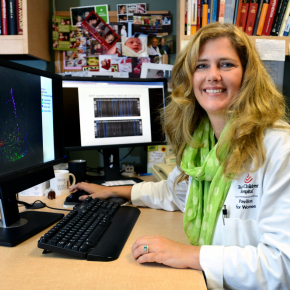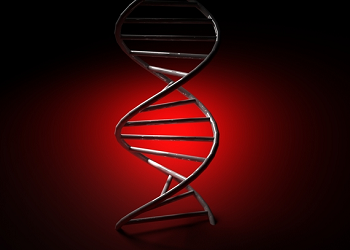Twinning linked to genes tied to reproductive fitness traits
Bearing fraternal twins, or dizygotic (DZ) twinning, runs in families, is potentially influenced by more than one gene and is linked to a maternal factor. In a study published in the American Journal of Human Genetics, an international team reports the finding of two genes that are associated with increased odds for women bearing fraternal twins.

“We know that dizygotic, or non-identical twins, is heritable,” said Dr. Kjersti Aagaard associate professor of obstetrics and gynecology at Baylor College of Medicine, and one of the authors. “What is additionally important about this study is that we were able to ultimately link our results, not just to twinning but to a number of different signs of reproductive fitness.”
“There’s an enormous interest in twins and in why some women have twins while others don’t,” said senior author Dr. Dorret Boomsma, a biological psychologist at Vrije Universiteit (VU) in Amsterdam, who has compiled one of the largest twin databases in the world. “The question is very simple and our research shows for the first time that we can identify genetic variants [variations of a gene] that contribute to this likelihood.”
The follicle stimulating hormone (FSHB) gene, one of two genes found to be linked to DZ twinning, has shown significant effects on fertility affecting multiple reproductive aspects. For instance, FSHB helps control the menstrual cycle and the production of eggs by the ovary.
“We found that not only did the FSHB gene variant associate with an increased likelihood of having DZ twins, but it actually increased the amount of follicle stimulating hormone that was found in women’s blood. The women carrying this genetic variant had their first period, menopause, their first child and their last child at an earlier age than women carrying other FSHB genetic variants,” said Aagaard.

Women who carried this FSHB genetic variant also showed signs of less occurrence of polycystic ovarian syndrome. With this discovery, researchers were able to tie this FSHB gene to multiple reproductive fitness traits.
The second gene found by the research team, SMAD3, affected the bearing of dizygotic twins a little differently.
“We found that moms who had this SMAD3 genetic variant also had a higher occurrence of twins,” said Aagaard. “But these moms were older at the birth of their last child, so it is a little bit different than what we saw with the FSHB variant.”
The SMAD3 genetic variant associated with DZ twinning, the authors propose, might increase the chances of DZ twinning by increasing the responsiveness to FSHB.
Both genetic variants affect the growth of multiple follicles, which is needed for the development of non-identical twins. Dizygotic twins start with multiple ovulation, a maternal characteristic, and identical twins start with one embryo that splits in half.

The follicle stimulating hormone (FSH), which is produced by the pituitary gland in the brain, regulates egg maturation in the ovaries. The FSHB variant discovered by the researchers is associated with higher secretion of FSH into the circulation, multiple ovulation, as well as with having the first period, menopause, the first and the last child at an earlier age than women carrying other FSHB variants.
The SMAD3 gene regulates the response of the ovary to FSH. The variant of the SMAD3 gene discovered in this work might increase the responsiveness to FSH. Women carrying this variant were also older when their first child was born than women carrying other variants. Courtesy of Hamdi Mbarek, Dorret Boomsma, Kjersti Aagaard and the Twinning GWAS Consortium.
This study focused on many different twin cohorts from around the world, including a cohort of nearly 90,000 twins from Iceland. In this group, having the FSHB variant increased women’s chances of having dizygotic twins by 18 percent, and SMAD3 by 9 percent. Women who had both variants showed an increased chance of 29 percent.
The work has numerous potential applications in reproductive medicine. For instance, it may help predict the outcome of multiple births and assist in the development of new strategies to treat fertility.
###
For the names and affiliations of the authors, and support for this research, visit the Supplemental Data section.



